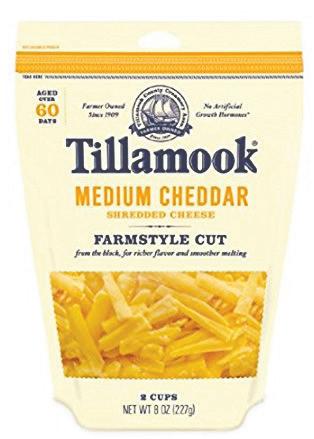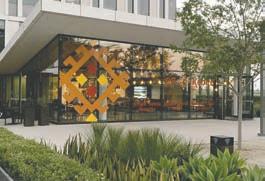














For the past three years, Dr. Andrea Zorbas has worked at the San Francisco Stress and Anxiety Center located South-of-Market, providing psychological counseling for adults. According to Zorbas, her clients, who often come with “career-related” worries, “all have an undergraduate degree, and most have a postgraduate degree,” and largely work in the tech industry.
Before moving to private practice, however, Zorbas spent a decade treating adolescents from low-income neighborhoods around the Bay Area, including two years at the KIPP Bayview Academy, a charter school for grades five through eight with a 48 percent African-American student population. She simultaneously man-
aged a caseload of Bayview teenagers on probation for Urban Services YMCA. Among her patients, she recalled “high anxiety, high levels of depression and hopelessness,” and, frequently, posttraumatic stress disorder, owing to “the continual community violence that was happening, whether that was families being robbed or gun violence.” She found girls especially vulnerable, searching for “safety and security” that was sometimes impossible to find.
Zorbas’s patient population faced “all the standard challenges of lowincome families,” trials that were amplified as San Francisco’s cost of living steadily increased. “Often families in the Bayview have been there for generations; people often know each other. And now the Bayview is starting
After some delays, the foundation is being laid at Project X, the next step in redevelopment of the Potrero Annex and Terrace housing complexes. Simultaneously, designs have been unveiled for the next stage of the massive renovation, giving a new glimpse into how Potrero Hill’s southeastern slope will ultimately be transformed.
Over the next 10 years, AnnexTerrace residents will be moved to newly constructed homes one section at a time, as the aging concrete buildings in which they’re current housed are demolished, replaced by modern ones. When the dust settles there’ll be the same number, 606, of public housing units that exist today, as well as 200 affordable and 800 market rate
apartments and 15,000 square feet of retail space.
Project X, being built on a vacant lot on the southeast corner of Connecticut and 25th streets, is two months behind schedule due to greater soil elasticity than anticipated. Additional dirt had to be imported to support foundation requirements, according to Dan Adams, project manager for Bridge Housing, the nonprofit that’s in the process of taking over management of the housing.
Air quality issues have also caused delays. Naturally occurring asbestos fibers in the serpentine rock on which Annex-Terrace was built triggered monitors at the site at least eight times, causing work stoppages and prompt-
PROJECT X continues on page 12
An ongoing San Francisco Municipal Transportation Agency project on Potrero Avenue, between 21st and 25th streets, was designed to improve safety and speedup San Francisco Municipal Railway schedules. However, nearby residents are concerned that the effort has resulted in excessive loss of street parking on the 900 block of Potrero Avenue, and created impediments for emergency vehicles accessing Zuckerberg San Francisco General Hospital, among other complaints.
The project is part of the Mission District Streetscape Plan, adopted by the San Francisco Board of Supervisors in 2010. SFMTA’s board approved it in 2014, with input from the San Francisco Public Works and Planning departments, as well as the San Francisco Public Utility Commission. Construction began in 2015, consisting of the addition of planted medians, bus stop improvements, street lighting and paving, widening the sidewalks and bicycle lanes, and installing a dedicated
southbound transit lane along Potrero Avenue. The work is funded by $3.2 million from the 2011 Road Repaving and Safety Bond. It’s anticipated to be completed by the end of next year.
“It’s really unsafe on so many fronts,” expressed David Jayne, Potrero Avenue resident. “Emergency vehicles are getting stuck at the medians, and it has created safety issues during loading and unloading from vehicles on the residential side of the 900 block.”
Three years ago, when the project was approved, the entrance to General Hospital’s emergency room was on 23rd Street. It was subsequently moved to 22nd Street, in front of which a median has been installed, reducing access for emergency vehicles and patients on route to the ER. According to Jayne, several years ago a Public Works spokesperson stated at a community meeting that a median wouldn’t be put in front of the hospital because emergency vehicles wouldn’t be able to switch lanes. He’s since been unable
“You’re a hypocrite!” my eightyear-old daughter, Sara, would shout, during arguments over how much television she could watch or when she should go to bed. It was the worst epitaph she could deploy, closely followed by “no fair!” In the black and white world of childhood, acting in ways that contradict what one says they believe or feel is as low as you can go.
Hypocrisy is a slippery concept. The idea that an adult goes to bed at 11 p.m. while making their kid do so three hours earlier isn’t hypocritical from the latter’s point of view. But, throw in a dash of “fairness” and the child might believe they have irrefutable evidence of duplicity. Why should they be treated differently than you? Patient insistence that adults have greater freedoms than granted children can erode harsh charges of hypocrisy, but at the potential cost of elevating accusations of unfairness, in the form of ageism.
The slope gets slicker when adults, purportedly protected by their ageinformed wisdom, engage in edgier activities. Alcohol-drinking, drugtaking, cell phone-addicted, junk food-eating, pornography-obsessed grownups may be able to forestall such behaviors in their adolescents, but by high school the jig is up. The question becomes not whether, but when, and how to manage entry into a more complicated world of temptations, while managing the resulting risks. Most of us are terrible at helping with this passage, a challenge that’s gotten even rockier with the legalization of marijuana.
My parents’ attitude towards early experimentation was along the lines of “don’t ask, don’t tell,” a philosophy I’d wager most moms and dads continue to employ. Of course, they were the ones who introduced me to the allures of intoxicants. My first experiences with alcohol, growing up in Palo Alto during the 1970s, was downing shot glasses of fruity Manischewitz during Passover seders. Like flavored tobacco,
or Sangria, the sugary sweet nectar went down easy, causing a nice buzz that took the edge off the droning of the stale story of Exodus. Drugs were even more charming. Even now I can feel the tug of desire when I recall the periodic spoonful of Codeine cough syrup, doled out by my mother to treat my chronic bronchitis, which led to a delicious narcotic sleep.
Later, as a teenager driving home alone after smoking marijuana at a friend’s house in the Stanford hills, I congratulated myself for being such a marvelous driver while stoned, as I squealed around tight curves on fortunately empty roads. After downing my share of a 99-cent bottle of tequila with new college freshman friends, I vomited repeatedly and everywhere, until finally, and literally, crawling into bed, which I discovered had become a spinning carnival ride, though not in a good way. Over the course of many ensuing “adventures” I never got hurt, nor hurt anyone else – at least physically – though did sometimes experience a penetrating sense of fear or despair. I was fortunate, as were most of my peers, not to drop into addiction or disaster, despite an almost complete lack of informed guidance. Still, a handful of my drug-addled companions overdosed or committed suicide; others were institutionalized for mental illnesses.
Hypocrisy is intimately linked to trust. It’s hard to rely on someone who says something and does the opposite. Insincerities’ ubiquitousness in politics has arguably eroding faith in government even further than the frequently discussed jump in income inequities; its incidence is just more difficult to measure. The cure for hypocrisy is to align our rhetoric and rules with our actual behavior, hard as that may be.
Growing up close to Anchor Brewing Company’s yeasty smell, Sara was drawn to beer by the time she entered
PUBLISHER’S VIEW continues on page 16

Last month, Potrero Hill resident, Jesus Sandoval, headed to the Mission for a night out, according to Rebecca Muzquiz, a friend who spoke with him at her aunt’s house, where Sandoval had been living. “I remember Jesse asking me for hair gel before he went out,” she said, adding that he generally wore his long, curly hair tightly pulled back. It was their last conservation. Hours later, Sandoval was found by police outside El Farolito suffering from a gunshot wound. He later succumbed to his injuries. Although Sandoval had spent the last six years of his life living with Muzquiz’s aunt and other family members in Potrero Hill, the Mission –where the 35-year-old spent much of his youth – remained his stomping grounds. “He loved to go to the Mission and meet friends. He’d come to the Mission to go out,” said Muzquiz. The families had known each other for years; she and Sandoval, who went by the nickname Jesse, were close. During the day, she said, he worked as a mover’s assistant with different moving companies, a job that would sometimes take him across the country. Sandoval was born on Christmas Eve, 1981, in Gilroy, California.
BAE Systems, the ship repair giant that operated drydocks at Pier 70 for more than a decade before walking away last year, has agreed to pay the Port of San Francisco $4.9 million to help fund improvements needed to lure a new operator to the facility. In 2016, BAE sold its Pier 70 operations to Washington state-based Puglia Engineering for $1 along with the company’s acceptance of $38 million in pension liabilities. Soon after, in a lawsuit yet to be resolved, Puglia sued BAE, alleging that the drydocks had “deteriorated to an extent that it would cost $9 million” to fix them, and that an additional $12 million in dredging is needed. The Port Commission has issued a request for proposals for a new operator for the repair yard, which includes two drydocks, 15 acres of land, numerous buildings, and port-owned cranes.
Little Boxes
District 10 Supervisor Malia Cohen wants to undo a 2014 municipal law that requires AT&T to decorate its utility boxes with greenery and murals,
and plant a tree near them if possible. Under Cohen’s proposal, AT&T could pay up to $3,500 per unit instead of beautifying the boxes. AT&T stopped rolling out its boxes after the 2014 law was enacted. Cohen, who is running for the California Board of Equalization, received a $7,300 campaign donation from AT&T’s lobbying firm earlier this summer…In other Cohen-related news, a group of tobacco manufacturers, vaping advocacy groups, and the Arab American Grocers Association is collecting signatures for a referendum to repeal the recently-adopted ban on flavored tobacco. Cohen, who sponsored the prohibition, called the action a “ridiculous attempt to put profit over people’s health.”
Last month, after four years of strikes and boycotts, the first new farmworker union in the United States in a quarter-century, Familias Unidas por la Justicia (FUJ), ratified a labor contract with Sakuma Brothers Farms, a Washington State berry producer. FUJ members mostly come from towns in Oaxaca and southern Mexico, where people speak indigenous languages that were centuries old when the Spanish colonized the Americas. “We are part of a movement of indigenous people,” said Felimon Pineda, FUJ vice president. An immigrant from Jicaral Cocoyan de las Flores in Oaxaca, he said organizing the union is part of a fight against the discrimination indigenous people face in Mexico and the United States. “Sometimes people see us as being very low. They think we have no rights. They’re wrong. The right to be human is the same.” According to Rosalinda Guillen, director of Community2Community, an advocacy organization that helped the workers organize, “Indigenous culture plays a huge role, especially people’s collective decision-making process. The strong bonds of culture and language give the union a lot of its strength.” Sakuma Brothers hires about 450 workers a year to pick strawberries and blueberries from June through October in its fields in Burlington and Mt. Vernon, Washington. About half live locally; half come north for the picking season from Santa Maria, Madera, Livingston, and other California farmworker towns. The migrants from the south live in the company’s labor camps during the work.


 by Steven Moss
by Steven Moss

Editor,
As I read Jason Bourne’s article about the cost of retaining commercial college counselors (“Families Retain “Counselors” to Negotiate Daunting College Application Processes,” July) and the quotes from an unnamed parent who felt that using these costly services exacerbated the divide between the haves and the have nots, I kept waiting to read a paragraph about ScholarMatch. But there was none.
ScholarMatch was started by Dave Eggers, of 826 Valencia fame, to “make college possible for underserved youth by matching students with donors, resources, colleges, and professional networks. ScholarMatch has expanded rapidly from serving just 39 students in 2010 to working with more than 500 students per year. Though crowdfunded scholarships remain at the core, our college advising, career coaching, and other services are an essential part of each student’s college journey.”
I’ve volunteered for ScholarMatch. The kids who come for college counseling there are bright, shining stars. Perhaps Potrero Hill families with sufficient funds to pay for commercial college counseling services can help level the playing field by spreading the wealth and supporting ScholarMatch as well.
Jilanne Hoffmann Excelsiorwas its editor for the next 40 years. I’ve come to appreciate the ongoing success of the paper since Steven Moss took over the reins many years ago. The paper always tried to be fair and balanced in its reporting of the news and its impact on our communities. In my estimation, this article fails to meet that standard.
Marc Passen El Granada, California Editor,In the July edition, there’s an article by Jacob Bourne that I believe gives an unbalanced view of the situation at San Francisco State University and our communities at large (“Lawsuit Filed Against San Francisco State for Fostering Anti-Semitism). The author points out that the University has allowed anti-Semitic activities on the campus, mentioning pro-Palestinian supporters interrupting a Jewish speaker at an event, and allegedly not allowing a Jewish student group to participate in a campus civil rights fair.
The article doesn’t speak to the daily racism that Muslim students and their families face in communities across our country. The Trump Presidency has given rise to both anti-Semitic and Islamophobia fervor. Yes, there’s anti-Semitism all around us, but not to mention the plight of the Palestinian people and the injustices suffered at the hand of the Israeli government is presenting only one side of an ever-worsening situation.
The Potrero View was started in the early-1970s; my mother, Ruth Passen,
Editor,
Jacob Bourne’s article on a lawsuit accusing San Francisco State University of “fostering anti-Semitism” is deeply flawed. Bourne quoted numerous proponents of the lawsuit, but doesn’t seem to have spoken to a single person on the other side. He references a Tel Aviv report claiming that U.S. campuses are a “hotbed of anti-Semitism,” but doesn’t mention that many such alleged incidents, rather than representing anti-Jewish bigotry, are actually actions in support of universal human rights. He fails to report that Israel and its partisans have worked to change the official definition of anti-Semitism to a new, expanded, version that includes criticism of Israel, and that the SFSU lawsuit cites this new, distorted definition.
Bourne omits the fact that the right-wing organization that filed the lawsuit, the Lawfare Project, describes itself as “the legal arm of the pro-Israel community,” and that its director claims, “There’s no such thing as a Palestinian person.” Bourne does not mention the detailed statement by California Scholars for Academic Freedom, a group of more than 200 academics who teach in 20 California institutions, that concludes, “The intent of the lawsuit is clear: to silence researchers and advocates for Palestinian rights and to ensure that they are punished.” Bourne mentions a campus demonstration against an Israeli official, but leaves out the fact that the official was responsible for a massive expulsion of Palestinians and the demolition of their homes.
San Franciscans need full, accurate, coverage of a lawsuit targeting a major San Francisco university, its professors, and its students. American taxpayers give Israel $10 million per day. It’s essential that we be fully and accurately informed.
Alison Weir Executive Director, If Americans Knew



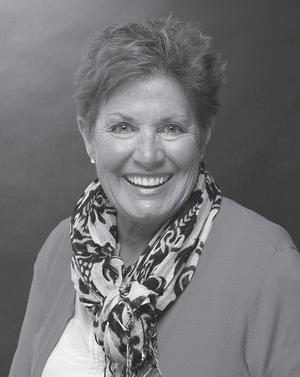
 BY ADI NORRIS
BY ADI NORRIS
What I did on Saturday June 10th wasn’t how I ordinarily spent the weekend. My family – mom, dad and I – assembled and delivered 10 care packages to 10 homeless people. They were all grateful in one way or another. The last visit was especially interesting.
The care packages contained apple chips, beef jerky, baby wipes, bandages and $5. My mom and I spent a half hour at Walgreens buying the items, and went to the bank to get 10 five- dollar bills. The total cost for each package was $20.
First, we went to the tent city behind Bayshore Boulevard. There were two women there, one black and one white. They were in their 30s, and were cooling off in their tent. We gave them three care packages. The third one was for the white woman’s boyfriend, who wasn’t present. We also gave them our old rug, because we’d just gotten a new one. We didn’t talk much, but they gave us a hearty thank you.
Then, we went to the tent city on Vermont and 17th streets to distribute the remaining care packages. There was an older woman without teeth. My dad explained to me that not having teeth severely lessens your chances of getting a job. There was a man wearing a plastic crown and a man with
an iPhone and stereo, but the most interesting person was the last person we visited.
He was an old black man missing an eye and teeth, wearing shorts that were a little too big and a loose t-shirt. After we gave him the care package, he talked to us for a whole 15 minutes about pretty much whatever was on his mind. He talked about the police, about prison, about keeping your mind sharp. He had a different perspective on things than what I’m used to hearing. He showed compassion for the risks police take on the streets. I could tell his life hadn’t been easy. He wasn’t hopeful or hopeless, but somewhere in between.
I gave the care packages out because last June was my “coming of age” 13th birthday and I wanted to do something that helped people. Since I live in San Francisco, I see a lot of homeless people while walking on the street. It really touches me, especially since if you have some really bad luck it could be you out there in the next few years.
One of the most memorable things that happened that day was the fact that almost all of the people we met thanked us by saying “God bless you.” I think that God is a source of hope for them.
Adi Norris is in eighth grade at Alta Vista Middle School.
BY ALLEN JONESGolden State Warriors fans can claim bragging rights as supporting the “best team in the United States” for another year, after the squad’s takedown of the Cleveland Cavaliers for the 2017 National Basketball Association title. But San Franciscans who support the team’s move to the City should consider what it’ll do to their neighbor, Oakland, and San Francisco’s own image before breaking out into full brag mode.
When the owners of the Warriors purchased the team in 2010 they had big plans. NBA titles and a new arena were mentioned repeatedly. Seven years later, the Warriors have two NBA championships and are six months into construction of an 18,000-seat arena in San Francisco’s newest neighborhood, Mission Bay.
To see these visionary owners accomplish so much in such a short time period is amazing. However, it appears they’ve developed cataracts, which have clouded their vision and good judgement. Partnering with San Francisco’s elected officials to steal one of Oakland’s jewels is a reprehensible act that no self-respecting San Franciscan would co-sign. The result of this theft is, San Francisco, a world class city, now looks like a world classless thief. A world class city helps its neighbors; it doesn’t help itself to its neighbor’s jewels.
San Francisco City Hall, along with the Warriors, would have San Franciscans believe that the move from Oakland is supported by most San Franciscans. But as a City resident since 1960, and a Golden State Warriors fan since 1975, I have serious doubts. I, along with many others, are ashamed of theft by association with self-serving billionaires. In addition, the wisdom of building an 18,000seat arena across the street from a Children’s Hospital at University of California, San Francisco is beyond shortsighted; it’s a tragedy waiting to
happen due to game day traffic.
Then there’s the weak justification for the move, an insult to longtime residents and a lie: “The team was here first and we are bringing them back home.” The Warriors were never located in San Francisco. They originated in Philadelphia. When they came west, they became the San Francisco Warriors, but their home games were played at the Cow Palace, located in Daly City.
For my favorite city, San Francisco, to treat my second favorite city, Oakland, in a covetous manner, by stealing the NBA’s best team, and trying to lie to cover up the theft, reminds me of an incident that occurred when I was 13-years-old. Walter, a classmate, came to school with a new watch he received as a gift. He showed it to me, and I coveted it to the point of intentionally grabbing for and slipping it off his wrist while we were playing. I took the watch home and told my father a friend at school gave it to me.
Of course, my father saw my lying lips move up and down with much skepticism, but he didn’t know what to do. When I returned to school the next day wearing the watch as if I got away with this theft, Walter told the teacher. The teacher also saw my lying lips move up and down as I claimed, “My father gave me the watch.” She then called my father.
In 2012, Mayor Ed Lee told an audience at the San Francisco Commonwealth Club, “…I’m not going to ever apologize for grabbing somebody else’s team…” Do thieves ever apologize? Perhaps when others point out the theft, and the thief realizes he’s caught red-handed. But being caught in the act, which is also un-San Franciscan, reflects negatively on all of us who wouldn’t even think of stealing the newspaper off the neighbor’s lawn.

At about 8:15 a.m., I’d just begun to trudge home after dropping off my car for a windshield replacement on Bay Shore Boulevard when I spotted Martita’s Kitchen – a small, slightly hidden Mexican restaurant amid the otherwise inhospitable landscape of automotive repair just south of Potrero Hill – and knew instantly that a breakfast burrito would be the thing to power me through the long walk back to civilization.


Martita’s $9 breakfast burrito is a generously stuffed cylinder of egg and chorizo, worth seeking out past the 24-hour carwash that fronts the restaurant at 2560 Marin Street, just below Cesar Chavez. With a counter, outdoor seating, and a tiny interior, Martita’s occupies the back end of the lot, serving breakfast – including American staples like omelets and bagels – and lunch – tacos, tortas, pupusas – between 8 a.m. and 3 p.m. every day but Sunday.
On the opposite side of the Hill, I visited the new free exhibit – Chronicle Books: Born in the Summer of Love, running through September 24 – at the San Francisco Center for the Book, 375 Rhode Island Street. The Center for the Book is, in its own words, “dedicated to the art of the book” as a tactile object of beauty, an increasingly significant concept as electronic formats overtake print media as transmitters of pure content. It offers classes in bookbinding, letterpress printing, and other old- and new-fashioned bookmaking methods.
The public exhibition area shares an open floor beside the machinery where artisans ply their craft. The 50th-anniversary retrospective for Chronicle Books, which started as an offshoot of the San Francisco Chronicle before making its name primarily as a producer of high-quality art books, is a natural fit for the space, allowing the local and still independent press to make a case for itself as a book design innovator while acknowledging its role as a purveyor of touristic photobooks and other paper-based gifts.

The 50 first editions on display at the Center represent a slice of San Francisco culture. They run the gamut from avant-garde endeavors to popular ones, with an emphasis on architecture, cooking, and photography. A number of books have become iconic: Griffin & Sabine, the postcard-based visual novel that was a national bestseller in 1991; Tartine Bread; Under the Tuscan Sun. But it’s more fun to look around amid the forgotten gems, like David Byrne’s inscrutable photography project Strange Ritual and San Francisco Modern, a survey of residential architecture that includes a detailed spread on the prerenovation Schindler Residence at 20th and Wisconsin streets.



opened its first New York location. Boba is a pearl-shaped form of tapioca over which bubble tea – a sweet, milky beverage of Taiwanese origin – is served either hot or cold. I’m no expert on boba, but Boba Guys’ drinks seem worthy of their hype. I’ve tried the soothing Classic and fragrant Jasmine Milk Tea; at the default sweetness level – which seems pretty high – they nevertheless taste far more of tea than of sugar. The shop’s modern, black-and-white interior – which includes a small bar area for on-tap “nitro tea” that can be consumed only on premises – is attractive, but feels ready-made for duplication. My recommendation is to get over there and enjoy a beverage before every upscale suburban strip mall in America has a Boba Guys and it no longer feels special, however delicious it may still taste.
Actually, I feel a little guilty already for spending three paragraphs of this column talking about what’s in some sense a chain restaurant. Which is why I want to direct you next to the hyperlocal homeware shop Industrious Life, at 1095 Tennessee Street. It seems increasingly possible that the niche boutiques and ateliers of Dogpatch represent the next step in retail’s evolution. The neighborhood contains virtually none of the traditional requirements of a business corridor – no grocery store, pharmacy, or laundromat – but there is, for example, a shop selling locally made messenger bags, another selling locally made clogs, and a few delicate, minimalist spots like Industrious Life that feel as much like artsand-crafts galleries as they do retail spaces. Dogpatch as a whole appears to have intuited that, in the future, people will probably use the internet to do all the shopping that they don’t actually enjoy – receiving their dull, daily necessities by delivery – while brick-and-mortar stores will exist for the aesthetic pleasure of their environments, for community engagement, and for oddities that you’d have to stumble across accidentally to discover that you want them.


Industrious Life is a tribute to the tangible stuff that, in the tech era, still gets made in San Francisco, and in Dogpatch especially. It sells local pottery, local jewelry, and locally made perfumes named after French New Wave films. If your house needs something cool but you’re not sure what, exactly, it’s a great place to visit. I don’t think I’ll ever care enough about the beauty of my home to spend $60 on a Cherrywood saltbox from a Bayview-based designer, but it’s kind of nice that some people do.
A short walk from the Center for the Book is the new Hill location of Boba Guys, the hip teahouse that opened in the spring at 1002 16th Street, below the Potrero 1010 apartment complex. To earn local support, real estate developers generally have made room for ground floor retail at their newer residential projects in and around the Hill. So far, most of these spaces are vacant. It remains to be seen whether the eclectic small businesses of our dreams – the ones that’d genuinely enrich the surrounding neighborhood – will be attracted to the spaces. For now, there’s fear that formula retail – Starbucks, Subway, Walgreens – which community guardians would likely find unacceptable on 18th Street, will eventually make its way to the relatively unprotected condominium buildings occupied by San Francisco newcomers on the Hill’s outskirts.
Only six years after its inception as a pop-up in the Mission, Boba Guys already feels a little too corporate for 18th Street. It’s definitely better than a Starbucks; its trendiness may well attract more ground floor tenants to Potrero 1010. By its own description, Boba Guys “serves the highest quality boba milk tea in the world.” It’s become a citywide phenomenon, with six stores around San Francisco, and seems to be dreaming of a nationwide chain, having already
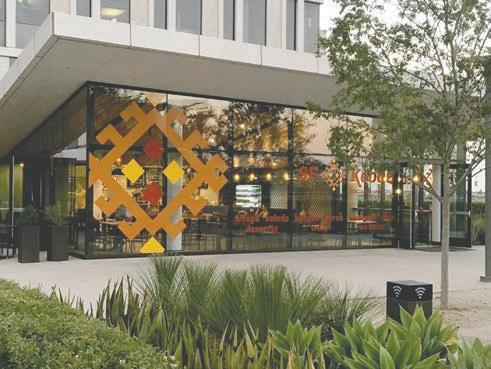

Finally, to bookend my earlier breakfast recommendation, I want briefly to mention the June opening of Mission Bay’s SF Kebab, a new dinner option that previously operated under the name Hayes & Kebab before it changed neighborhoods. The Mediterranean fare – gyros, kebabs, and tabbouleh – is good and by all accounts authentic, but the restaurant design is perhaps more noteworthy. The striking building at 550 16th Street fits within the glassy geometry of its environs without succumbing to its monotony. The interior is warmer, with wooden tables and Moroccan accents, and
As reported, in a series of View articles in 2015 and 2016, The Good Life Grocery store on 20th Street has been fined for violating the State’s “Bottle Bill,” the California Beverage Container Recycling and Litter Reduction Act, or CalRecycle, passed in 1986. Kayren Hudiburgh, co-owner of both the retailer’s 20th Street and Bernal Heights locations, has been pushing for an exemption from the law’s requirements for the past two years, meanwhile receiving state fines of $100 per day.
“I’m all for recycling but can’t be a redemption center,” offered Hudiburgh. “We have a small store with two cashiers working. Large carts can’t even fit in the store. We recycle all our recyclable waste, we just don’t have the capacity to do redemption.”
The Bottle Bill mandates that grocery stores earning more than $2 million in gross sales annually serve as recycling redemption facilities. CalRecycle divides the City into 58 “convenience zones” in which grocers that meet the criteria must redeem used plastic and glass bottles brought in by the general public in exchange for cash, or pay fines of up to $36,000 per year until a redemption center is established within the zone. As previously reported by the View, only about 20 zones in San
Francisco contain an establishment that accepts bottles; many corporate grocery chains, such as Safeway, Whole Foods and Trader Joe’s, deem it more feasible to pay the fine than provide redemption services.
“Larger grocery stores would prefer to pay the fine than be a redemption center. Smaller grocery stores with no parking and limited space just can’t do it,” explained Hudiburgh. “Our $2 million in gross sales is mostly in produce and fresh goods. We sell a very small amount of canned and bottled items. We would have to accept cans and bottles not even purchased at our store that have been taken out of blue recycling bins.”
Hudiburgh described the numerous barriers to being able to function as a redemption facility within the confines of The Good Life Grocery’s 1,200 square feet, including lack of space to store containers and sanitation issues that could result in public health code violations. She also believes that redemption activities have led to loitering at stores that do accept containers. When small grocers try to comply with the law to avoid being fined, it can create logistical hardships. Hudiburgh told of another local store owner who would make frequent trips to recycling centers to drop off redeemed containers due to lack of storage. On one occasion,

Potrero Dogpatch Merchant’s Association meets the second Tuesday of each month at 10 a.m. at Goat Hill Pizza, corner of Connecticut and 18th streets. Website: www.potrerodogpatch.com . Call 415.341.8949. Next meeting: August 8th.
Starr King Open Space meets for monthly Stewardship Day the second Saturday of each month from 9:30 a.m. to 12:30 p.m. at Starr King Open Space, corner of Carolina St. and 23rd St. Come out and meet your neighbors, be a community steward, enjoy the natural grassland habitat, see spectacular views, and celebrate our beautiful neighborhood open space. Everyone is welcome. Find out more at www.starrkingopenspace. org or facebook.com/StarrKingOpenSpace
SOMA Rotary Club meets the second and fourth Thursday of the month at Mission Rock Resort, 817 Terry Francois Blvd. We meet at 6 p.m. for a mixer and 7 p.m. for a dinner meeting. We provide community service to the Mission Bay, Potrero, and Bayview communities. The focus is on providing services for the under-served of our community. The website is located at: www.meetup.com/Mission-Bay-Rotary-Club. For more information contact Nine at: n.ladow@comcast.net
Potrero Hill Garden Club usually meets the last Sunday of the month at 11 a.m. for a potluck in a local home or garden. We occasionally visit gardens such as Ruth Bancroft, Yerba Buena, Cornerstone, Filoli, and the rooftop garden at the Fairmont. We discuss gardening appropriate for Potrero Hill’s microclimates, and often have speakers on subjects such as drought, wind, shade, pests, and even flower arranging. For details, please contact us at Gardener@PotreroHillGardenClub.org
Dogpatch & Northwest Potrero Hill Green Benefit District General Board Meeting August 16. Working together to green-up, clean-up and beautify public spaces in Dogpatch and NW Potrero Hill. Free. 6:30 to 8 p.m. Tivoli Room @ UCSF, 654 Minnesota Street. http://www.greenbenefit.org
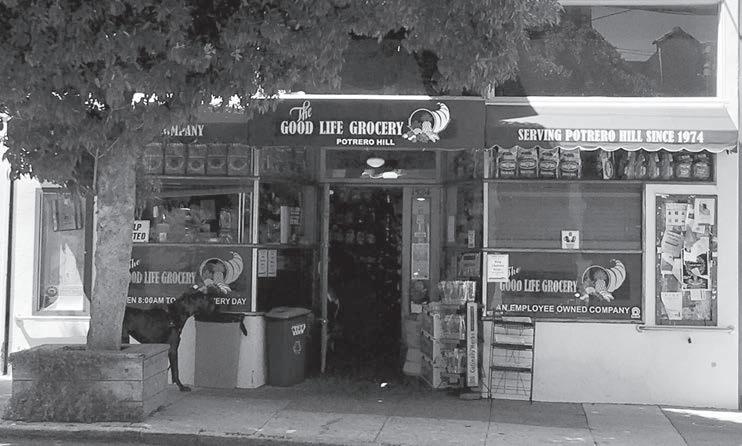
he loaded a truck with containers and transported them to the recycling center, only to find it unexpectedly closed and left with nowhere to store the containers in the interim.
Frustrated, Hudiburgh had phoned CalRecycle and explained her predicament to a State employee. Astonishingly, she was advised to sign an affidavit agreeing to carry out the duties of a redemption center but not actually follow through. The rationale given was that the State only has seven investigators, and the risk of being caught is low. She then explained that she didn’t feel comfortable committing perjury and questioned how the revenue from the fines is being used.
After months of advocating for her store’s inability to comply with the Bottle Bill by writing to State Senator Scott Weiner, District 10 Supervisor Malia Cohen and CalRecycle representatives, Hudiburgh received a letter from CalRecycle in June explaining that One Planet Recycling LLC, at 250 13th Street, is now functioning as a recycling center for the locale and The Good Life Grocery has been exempted from the Bottle Bill’s requirements. A few days later she received a $3,100 bill from the same sender, and another for $2,800 the following month. The invoices are labeled as fines for non-compliance during the months of January and February. Hudiburgh maintains that it isn’t possible to pay the penalties and plans to continue to protest.
In March, Hudiburgh wrote to Senator Weiner expressing support for Senate Bill 458. Weiner had introduced the bill in February to allow mobile recycling centers to operate as full-fledged recycling
centers under state law, relieving small businesses of Bottle Bill burdens. The bill emerged in the wake of an attempt by the San Francisco Department of the Environment to initiate a mobile recycling program that was foiled due to state restrictions.
According to a press release from Senate District 11, “San Francisco has the lowest recycling zone coverage (seven percent) of any city in the State. This leaves 579 beverage dealers in San Francisco outside of any ‘convenience zone’ established under the Bottle Bill, and therefore subject to the requirement to either redeem containers or pay a daily fine.” To ameliorate the issue, the mobile recycling program would operate at least once per week in a variety of City locations for at least eight hours per day.
“With our ambitious zero waste goals, San Francisco has long been a national leader in recycling and waste reduction efforts,” said Senator Wiener. “Yet, our dense urban environment has evolved over the decades since the Bottle Bill was passed, and we need to be more flexible in finding solutions to maximize our recycling efforts. Mobile recycling will allow us to continue to promote smart and effective recycling policies, while relieving a burden on our business owners, particularly our small mom-and-pop corner stores that don’t have the capacity or resources to meet the one-size-fits-all obligations of state law.”
Last month, the Senate Appropriations Committee voted unanimously in favor of SB 458. It was read for a second time at a July floor session and must be read for a third time in either August or September before passing.




Now through 8/31
Art: Sofia Carmi
Mystical colors. Paintings in Oil.
Opening event August 3, 6 to 8:30 p.m. Suggested donation. Alliance Française de San Francisco, 1345 Bush Street. For more information and to register: http://bit.ly/2vFBIzy
Now through 9/24
Art: Portals Connecting San Francisco to the World
Since its 2014 launch, Portals have connected more than 30,000 people across 20 countries in one-on-one dialogues, using technology that makes it as easy to call someone down the street as across the globe. The project envisions a world where no matter what the activity — work, exploration, play — people from all walks of life can enjoy the benefits of doing it with other human beings from communities unlike their own. Shared Studios created Portals, and with the idea that they’ll become permanent
fixtures around the globe. Community partners have built Portals in diverse locations, including Syrian refugee camps, Afghan universities, and Mexican public parks. Notable guests who have engaged the Portals network include Barack Obama, Ban Ki-moon, John Kerry, Penny Pritzker, Samantha Power, Haider al-Abadi, Sergey Brin, Fareed Zakaria, Josh Radnor, Doug Liman and Ewan McGregor. Free.
Southeastern corner of the East Beach parking lot, Crissy Field. For schedule and reservation information: http://bit. ly/2gNs3nY and http://bit.ly/2uLuE7u
Art: Botanical/Science
Drawing
Arch hosts a drawing class on Tuesday nights! 6 to 8 p.m. $15. Adults only. Arch, 10 Carolina Street. Sponsored by Dogpatch Center for Arts & Culture. Class size is limited. For more information and to register: dcenter.org/arch
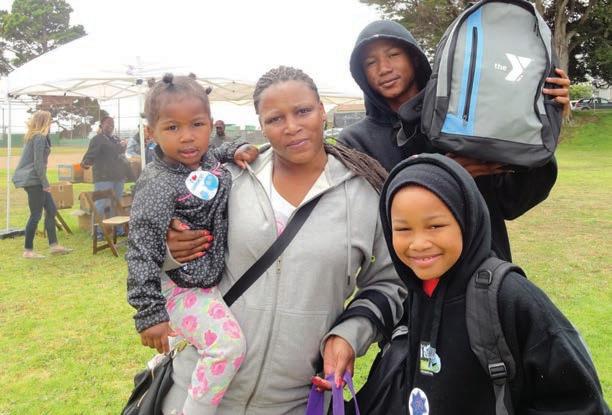
Unite Potrero: Backpack Giveaway & Resource Fair
August 12, 11am - 2pm, Potrero Hill Recreation Center
Are you ready?! Ready to scale the climbing wall, take a dance workshop, and get your face painted?! And most importantly, get prepared for academic success by receiving free backpacks, essential school supplies, and back-to-school information. This year’s theme is “Connect for School Success”. The event will provide students (of all ages, children to adults) and their families with free resources for a successful start to the 2017-18 academic year, including: preschool and afterschool program enrollment details, barber haircuts for boys and hairstyling for girls, college enrollment and financial aid information, and career opportunities in construction and other fields.
The resource fair is a component of Rebuild Potrero (www.rebuildpotrero.com), BRIDGE Housing’s comprehensive effort to rebuild 619 units of public housing and create another 1,000 new homes with a range of affordability, community facilities, open space, and social networks and services to improve the lives of current and future generations. Rebuild Potrero is a part of HOPE SF (www.hope-sf.org), a City/County-wide antipoverty and housing development initiative.
The event planning committee consists of neighborhood-serving organizations including, but not limited to, Rebuild Potrero/ BRIDGE Housing, Urban Services YMCA/ Potrero Hill Family Support Center, Potrero Hill Recreation Center, Community Awareness Resources Entity (CARE), Cross Cultural Family Center, Healthy Generations Project, Potrero Hill Health Center, Shanti Project, and Starr King Elementary School.
For more information: website: rebuildpotrero.com, e-mail potrero@bridgehousing.com
resident Daniel Berkman is a composer, multi-instrumentalist, and innovator of the kora, a 21-stringed harp/lute from West Africa. 7:30 to 9 p.m. Farleys, 1315 18th Street.
8/4 through 8/6
Art: American Craft Show
The American Craft Show features more than 230 of the country’s top contemporary craft artists. Collectors and design enthusiasts can engage in four experiential showcases: Make Room: Modern Design Meets Craft; Style Slam; Let’s Make; and Hip Pop.
As the West Coast’s largest juried fine craft show, the 2017 San Francisco event is expected to draw more than 10,000 fine craft collectors and design enthusiasts. Shop one-of-a-kind, finequality crafts and meet the country’s most talented artists. Tickets: $10.50 to $46. Fort Mason Center, 2 Marina Boulevard. To purchase tickets and for more information: http://bit. ly/2uMWCR3
8/4 through 8/26
Art: Love is Still Here
In the spirit of the Summer of Love, 12 printmakers from Graphic Arts Workshop in Dogpatch exhibit fine art prints utilizing a variety of techniques. Opening reception: Saturday, August
5, 3:30 to 5:30 p.m. 2565 Third Street, Suite 305, next door to the Museum of Craft and Design. Exhibit on view Fridays and Saturdays from 1 to 5:30 p.m. Free. For more information: Clare Metague claremetague@gmail.com.
Music: Amalgamation
A “stripped down” set of Americana/Blues/AltCountry tunes consisting of vocals, duo acoustic guitars, harmonica and kick drum. Think foot-stomping tunes inspired by the likes of Jack White, Alabama Shakes, Johnny Cash and Rosetta Tharpe. 7:30 to 9 p.m. Farleys, 1315 18th Street.
Art: Flower Arranging Learn to make a beautiful bouquet. Open workshop from 2 to 4 p.m., all ages welcome. $10. Arch, 10 Carolina
Street. Sponsored by Dogpatch Center for Arts & Culture. Supplies are limited; register at dcenter.org/flowers
8/8, 8/15, 8/22, 8/29
Dance: Lindy Hop Swing Dance Classes and Live Music Dance Party
The Woodchopper’s Ball is San Francisco’s newest weekly swing dance event! Learn the Lindy Hop, the original swing dance craze from 1930’s Harlem! Live music swing dance party, with a different band each week, 9 to 11:30 p.m., $10, students free, all ages. Admission includes a basic lesson: beginning, 8 to 9 p.m., intermediate, 7 to 8 p.m. Brought to you by Lindy in the Park instructors, Hep Jen and Ken Watanabe. No partner or experience required. Full four-week class series: $75/month ($60 in advance), $20/ week drop-in. Verdi Club, 2424 Mariposa Street. Huge dance floor, and full bar (21+ only)! For more information and to register: www. woodchoppersball.com
Music: Bum Wagler & The Tune Wranglers
Live music by Bum Wagler & The Tune Wranglers, who play original tunes in the Honky Tonk country vein. 7:30 to 9 p.m. Farleys, 1315 18th Street.
Art: Flower Arranging
Make a beautiful bouquet. Open workshop from 11 a.m. to 1 p.m., all ages welcome. $10. Arch, 10 Carolina Street. Sponsored by Dogpatch Center for Arts & Culture. Supplies are limited, register at dcenter.org/flowers
Art: Kid’s Storytime Art
What could be better than reading a story together, and then making art inspired by that story? Ages three and up. 12:15 to 1:15 p.m. $15. Arch, 10 Carolina Street. Sponsored by Dogpatch Center for Arts & Culture. Class size is limited. For more information and to register: dcenter.org/storytime
Community: Bernal Heights
Hillwide Garage Sale
A Bernal Heights tradition and arguably the largest single day garage
sale is back. Over 150 households participated in 2016. 9 a.m. to 2 p.m. For more information: http://hillwide. com/
Music: Soul Delights
Live music by Soul Delights. 7:30 to 9 p.m. Farleys, 1315 18th Street.
Music: Jazz Herstory Collective
Jazz Herstory Collective celebrates the Bay Area’s long and deep history of extraordinary women playing jazz, funk, rock and soul. Featuring some of the most prodigious young musicians on the Bay Area scene, JHC has honed an infectiously grooving repertoire of jazz classics, original soul jazz and contemporary styles. 12:30 to 1:30 p.m. Free. Esplanade, Yerba Buena Gardens, Mission Street between Third and Fourth streets. For more information: http://bit.ly/2tuB8b7
8/17 – 8/27
Theater: Radical Hope & the New Resistance
3Girls Theatre (3GT) Company presents The 6th Annual New Works Festival, representing the best of 3GT‘s efforts to develop, produce and promote original work by women playwrights. This year’s theme, 3GT Celebrates Radical Hope and The New Resistance, explores the need for artists to never let go of hope, despite what political forces surround us. Like many artists and citizens, 3GT felt discouraged and disenfranchised by the 2016 election results. This year’s theme relates to the helplessness many people feel due to the new regime in Washington, and allows people to express frustration in a constructive way. Free; reservations recommended. Potrero Stage, 1695 18th Street. For show times and reservations: http://bit.ly/2ueIXyV
Food: Preserved Lemons
Workshop Moroccan Tagines. Tangy Garnishes. All can be within your culinary reach with a preserved lemon in your pantry! Learn from the expert teachers from the University of California Master Food Preservers. Bring home a lovely jar of preserved lemons. 10:30 to 11:30 a.m. $20.
Umpqua Bank, 415 De Haro Street. Sponsored by Dogpatch Center for
Arts & Culture. For more information and to register: dcenter.org/lemons
Art: Introduction to Book Binding
Learn the art of book making, with Megan Adie. All materials provided; you’ll go home with lovely crafted books! 1 to 3 p.m. $45. Arch, 10 Carolina Street. Sponsored by Dogpatch Center for Arts & Culture. For more information and to register: dcenter.org/books
Film: Animal Film Festival
Designed to both entertain and educate, the Animal Film Festival screens funny, warm-hearted, and joyful films. The program is divided into three sessions, with two 15-minute intermissions. 12 to 4 p.m. From $10, single session, to $25, all day pass.
The San Francisco SPCA, 250 Florida Street. For more information and to purchase tickets: http://bit.ly/2voBi1d
Science: 76 Percent Solar
Eclipse
On Monday, August 21, 2017, North America will be treated to a solar eclipse. Anyone within the path of totality will see one of nature’s most awe-inspiring sights. This path, where the moon will completely cover the sun, and the sun’s tenuous atmosphere – the corona – can be seen, will stretch from Lincoln Beach, Oregon to Charleston, South Carolina. In San Francisco, where observers will be outside this path, the eclipse starts at 9:01 a.m., the maximum phase, 76 percent, at 10:15 a.m., with the eclipse ending at 11:37 a.m. Free. For more information: http://bit.ly/2uE4FiI
Games: Coin Op’s Free Play
Sundays
Coin Op is a 10,000-square foot South-of-Market space that was transformed from a steel foundry into a two-story bar and game room with more than 40 pinball and video games. On the last Sunday of every month all pinball machines and arcade games are set on free play. Full bar and menu available. 21 and over. Free. 4 p.m. to 2 a.m. Coin Op Game Room, 508 4th Street. For more information and latest schedule: http://coinopsf. com/ or 628.444.3277
Books: Ready or Not
A new cookbook from the James Beard awardnominees and New York Times best-

selling creators of Nom Nom Paleo, the wildly popular blog, app, and bestselling cookbook. Ready or Not makes healthy Paleo home cooking a breeze, whether there’s time to prepare or just minutes to spare. 6 p.m. Free. Book Passage, 1 Ferry Building. For more information: http://bit.ly/2ufy53K
Books: The Cooking Gene: A Journey Though African American Culinary History in the Old South Southern food is integral to the
American culinary tradition, yet the question of who “owns” it is one of the most provocative touch points in ongoing struggles over race and appropriation. Culinary historian Michael W. Twitty takes readers to the white-hot center of this fight, tracing the roots of his own family and the charged politics surrounding the origins of Southern cuisine. 6:30 to 7:30 p.m. Free. Omnivore Books, 3885a Cesar Chavez Street. For more information: http://bit.ly/LvOKYY
Earlier this summer, the City and County of San Francisco published the results of its point-in-time census and survey of homeless people. The “PIT count,” a comprehensive tally of sheltered and unsheltered homeless, is conducted every two years. The canvass found that homelessness slightly decreased since 2015, bucking a regional trend in which homelessness has significantly increased.
The 2017 count found 7,499 people experiencing homelessness — compared to 7,539 in 2015 — with 3,840 of those unsheltered, a bit more than 50 percent. Upwards of 1,000 of “unsheltered” individuals live in encampments.
Around the same time as release of the PIT count, the Department of Homelessness and Supportive Housing – whose mission is to make homelessness rare, brief and non-recurring –produced a progress report on its initial year of operation. During its first year DHSH provided shelter to 5,633 adults,
and assisted more than 1,950 people exit homelessness through a combination of permanent supportive housing, rapid re-housing, and homeward bound, which provides bus tickets.
DHSH is developing a comprehensive, “common sense, compassionate, strategic framework” to guide its work, scheduled to be released this month, “outlining a radical transformation of the Homelessness Response System and clearly defined, obtainable goals for the next five years.” The Department asserts that, in addition to launching Navigation Centers and increasing supportive housing supplies, its making significant changes to the way it coordinates entry into the shelter system, track data and resolve homeless encampments.
Still, San Franciscans remain unsatisfied by the City’s efforts related to homelessness, with complaints continuing largely unabated about a lack of effective municipal response to encampments.






 BY OLIVER KRAUSE
BY OLIVER KRAUSE
How long does it take to save Paris from invading Martians? About five minutes, on Pacific Pinball Museum’s classic Revenge From Mars pinball game. With art, science, and innovation in mind, Chabot Space and Science Center’s pinball exhibit – which runs until September 24 – features Revenge along with 35 other fully functional pinball machines and interactive displays that illustrate the anatomy, evolution, and genius behind classic electro-mechanical arcade games.
Hands-on displays – manual score counters, chimes, and bumpers – breakdown pinball machines’ seemingly complex mechanisms into transparent, easily understandable exhibits. Two acrylic see-through games reveal their inner workings. Ranging from some of the earliest pinball games ever made to modern pinball machines, and everything in between, there’s something for everybody at this celebration of all things pinball.
Oliver Krause is a freshman at Lick-Wilmerding High School.
Ben Lopez, who works at Christopher’s Books on 18th Street, has noticed that when it comes to book buying customers, “Kids seem to know what they like. Adults ask for help more.”
These days, it’s serials that dominate at the cash register. “Like Harry Potter, they want something that is expansive and something they can read many volumes of,” Lopez said. “It is compulsive and they want more of it.”
Perennials on The New York Times bestseller list for “Children’s Series” include Captain Underpants, which is on its 12th volume, and Diary of a Wimpy Kid, on its 11th. Rick Riordan’s Percy Jackson & The Olympians series has five books, and has spawned two other series in which Jackson is a character. A recent addition to the list is Miss Peregrine’s Home for Peculiar Children, which has two sequels.
“Diary of a Wimpy Kid is still popular,” said Lopez. “Each time there is a new addition it sells out.” For Captain Underpants fans who want more, Lopez pointed out that its creator, Dave Pilkey, has a new series, Dog Man , about a police officer who gets fused with his dog after both are victims of a bombing.
Lopez also singled out the Thrown of Glass series, by Sarah J. Maas, and the Legend sequence, by Marie Lu, as popular, particularly with those who were drawn to the Hunger Games , which he says isn’t as demanded these days.
The popularity of serials is as old as storytelling itself. Riordan began writing his books after running out of
Parent-Teacher Associations (PTAs), principals, teachers, nonprofit directors, and parents began planning for the upcoming academic year even before the 2016-2017 school year ended. “Our PTA worked closely with staff to develop and vote on priorities for fall in mid-May,” said Kopal Goonetileke, Daniel Webster Elementary School’s PTA president. “We plan the semester before, so right on the first day of school we’re ready. Our PTA helps fund the purchase of school supplies that the school budget doesn’t necessarily cover. By setting up the budget in advance, teachers can shop for what they need over the summer.”
Daniel Webster’s PTA will use a portion of the just-under-$200,000 amount it raised to fund a computer teacher, who will be hired by the San Francisco Unified School District (SFUSD). In addition, PTA funds will continue to support the OWL tutoring afterschool program, snacks for standardized testing days, and technology equipment purchases, such as Smart Boards and perhaps ChromeBooks.
According to Carrie Betti, Daniel Webster principal, the PTA helps enhance arts programming every year. “SFUSD funds many arts programs at our schools through our yearly budgets, but our PTA’s partnership allows for us to contract out additional local arts
providers to implement a robust art program at Daniel Webster,” said Betti.
Betti said parents should expect changes to the campus this fall, including a new “greening project” on the play yard, which “will provide natural play spaces and potentially areas where we can engage in environmental studies through gardening and planting projects to complement our science standards and projects.”
Darlene Martin said she’s been preparing for her second year as Starr King Elementary School principal by reviewing her progress. She’s also questioning how she can value diversity and the needs of all learners. “We will be hiring an additional science
BACK TO SCHOOL continues on page 17

Greek myths to read to his son, who had become a fan of the classics. While sequels make for easier marketing, it isn’t as if the juvenile book market is hurting for new ideas. The children’s market has been the book industry’s fastest growing segment, with sales increasing 53 percent from 2004 to 2014, according to the Nielsen marketing research firm. In 2002, there were 4,700 young adult titles; 10,000 in 2012.
Growth has cooled in the last couple years, mostly due to oversupply, said Shannon Mathis, the children’s buyer for Books, Inc., whose warehouse on Vermont Street serves 11 Bay Area stores. “Things that work really well sell a ton of copies, but only a few rise to the top,” she said. The ones that attract youth the most offer elements they can relate to. “Books that are funny, truthful and honest, and reflect what is going on in their daily life,” she explained.
Media tie-ins have been one of the market’s major drivers. In 2013, only five juvenile books made the U.S. top 20 in sales. In 2014, 16 did, and from Frozen to Minecraft to Divergent, all were connected to movies, games or television. Those, in turn, spur trends. “When Harry Potter was in its heyday we were seeing lots and lots of fantasy books,” said Mathis. “When Twilight was popular, paranormal romance was popular.”
According to Nielsen, robots are now the fastest growing sub-category in juvenile fiction. There’s The Wild Robot, by Peter Brown, which follows a robot that wakes up to find itself on


ing concerns from nearby residents. Dust from the excavation may have been kicked up by car traffic on 25th Street, or by heavy winds. According to Adams, the Bay Area Air Quality Management District inspects the location daily. “If we meet an exceedance two days in a row, we shut the site down,” he said, adding that asbestos isn’t considered dangerous unless people are exposed to fibers 24 hours a day over a seven-year period.
Despite delays, which Adams said will be made up with overtime hours, Project X – 1101 Connecticut Street –should be completed on schedule by October, 2018. Terrace residents living
in eight buildings located south of 25th Street will then be moved to make way for “Blocks A and B.” Block A, which’ll be furthest to the west bordering an extended Arkansas Street, is to be market rate housing. Block B, in between Connecticut and Arkansas streets, will feature 120 units with a mix of affordable housing and current Annex-Terrace residents.
A looming issue is that Project X will have 72 units; 86 households will have to be moved to clear way for Blocks A and B to be built. In addition, 18 of 72 Project X units are set aside for affordable housing residents new to the neighborhood, as a way to ensure a mixed income population at each building. As a result, 22 households


If you are a property owner of a multi-unit building with 3-stories with 5 - 15 units, your permit application is due by September 15, 2017, which is less than 45 days away.
Turn in your permit application to DBI by September 15 to avoid getting this placard and a Notice of Violation on your property.
Find out if your property is on the list by visiting sfdbi.org/soft-story-properties-list.

that miss out on the lottery for Project X will have to either be moved to vacant units elsewhere within Annex-Terrace or accept relocation to public housing elsewhere. If they stay on the Hill, they face being moved a second time. If they depart, they forfeit a chance to return.
John W. Smith, council president for Terrace residents, said he’s taking a “wait and see” attitude towards the relocation process. However, Eddie Kittrell, a former Annex president, has stopped going to the meetings Bridge sponsors to discuss the redevelopment process. Kittrell was a member of a 2008 City task force that studied renovating the existing buildings, but as the project evolved into a larger, mixed income development he felt his input was neglected.
Block B designs were unveiled earlier this summer during a presentation at Starr King Elementary School. An earlier plan calling for seven townhouses was scrapped in place of two larger structures which’ll allow elevator access for handicapped residents. While the buildings will feature the same stepdown heights as the townhouse plan, the interior yard will be leveled off, permitted a small public park and resident-only outdoor community area. There’ll also be a day care center for 60 children and underground resident parking. The design is a joint effort between Y.A. Studio in the Outer Mission and larger Oakland-based HKIT Architects, which completed a modernization at Starr King last year.
During the presentation, AnnexTerrace residents voiced several concerns, one being whether newcomers
who qualify for affordable housing would get units with better views. Adams said that’ll not be the case; affordable units will be scattered throughout, not solely on the top floor.
In what’s been an ongoing issue, residents sought clarification on laundry facilities; many have in-unit hookups now. Meeting participants said they’d been led to believe that the new apartments would include washers and dryers, only to be told later that laundry amenities would be coinoperated and located on each floor. Bridge Housing staff stated that the latter will be the case, with the exception of three-bedroom units, which’ll have their own hookups.
Since underground parking will be limited to one space for every two units, several meeting participants expressed concerns about parking availability. A lottery will be held for the spaces; the number of on-street parking spaces will increase overall with the extension of the street grid.
Designs haven’t yet been completed for Block A, which isn’t slated to begin construction until after B is complete. It’s yet to be determined whether Block B will consist of rental units or condominiums. “We are a good four years off from having our first market rate,” said Adams.
According to Adams, Bridge Housing and its builder, Cahill Contractors, have made progress hiring AnnexTerrace residents. By law, Cahill is required to fill half of work site jobs with residents, but only if qualified
PROJECT X continues on page 13
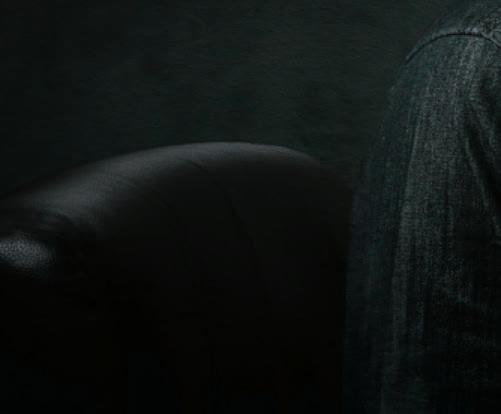



PROJECT X from page 12
individuals can be found. Through the end of May, only two inhabitants had been hired on site; another 40 had been placed at a variety of other locations in the City.
“We expect we will be hiring more as the project picks up speed,” said Adams. Fifty-two residents have registered with Citibuild, a municipal agency that recruits and prepares workers for construction-based jobs, although only one has graduated. Citibuild offers an 18-week training program.
Edward Hatter, Potrero Hill Neighborhood House executive director, worries that the project is a “land grab.” Hatter, who works with teenagers and young adults living in Annex-Terrace who face legal or employment obstacles, is concerned that new or more stringently enforced lease rules could act to evict those in that age group. It’s not uncommon for children to leave Annex-Terrace, to return later without being on a lease. “We could be creating another population of homeless,” he said.
ANXIETY from front page
to be gentrified, so families are then starting to get kicked out,” she said. “The disparity in the City is so extreme. Here we have these new tech guys moving into the Bayview, like 24-yearolds making hundreds of thousands of dollars, and then you have generations of families there just scraping by, and it’s this really odd dichotomy. My kids were already facing a lot of different levels of oppression,” but the presence of these newcomers “threw it in their face a little bit.”
As the neighborhood changed, a new type of anxiety emerged among Zorbas’s teenagers, revolving around a fear of gentrification and displacement. “When you grow up in an unsafe environment, you become hypervigilant
about what’s going on in the community, so when you see a dilapidated house next door getting sold for a couple million dollars, you’re thinking, ‘OK, when is my landlord going to kick us out so they can do the exact same thing?’” she posited. “You’re just on edge. Are you going to be able to stay in San Francisco? Are you going to be homeless? That was absolutely on their minds. They get anxious about it because their parents are anxious about it.”
When she was hired by the San Francisco Stress and Anxiety Center, Zorbas, knowing her clientele’s demographics, anticipated a job that “could not be more opposite of what I used to do.” But her new clients simply represented the opposite side of the same coin. Here, again, she was dealing with the insecurities brought on by San Francisco’s new tech culture. Many of her clients were young women whose hypercompetitive workplaces had eroded their self-confidence. Despite having good jobs, they worried about money, living “check to check” in order to pay their expensive rent.
Though often transplants, they too wondered how long they’d be able to afford to live in the City, and what’d happen if they got fired. “Even if they don’t like a job, they have to stay in it because they want to stay in San Francisco. It’s like: ‘I came here for this opportunity; I’ve got to figure out how to make this work.’ And then, at work, every project is that much more pressure, every presentation, everything, because they’re hanging on by a thread, and they don’t want to go back to Ohio or wherever.”
In 2015, a The Atlantic article, “The Silicon Valley Suicides,” detailed journalist Hanna Rosen’s investigation into “elite American adolescents whose self-worth is tied to their achievements and who see themselves as catastrophically flawed if they don’t meet the highest standards of success.” Stressed-out high schoolers had thrown themselves in front of Caltrains in Palo Alto. Now, parents and mental health experts worry that, as Silicon Valley’s

Saturday
Sunday
Tuesday
Friday


ethos envelops the rest of the Bay Area, similar challenges have arrived in San Francisco, where the industrious habits of the perpetually busy, ambitious professionals who increasingly populate the City are trickling down to their more fragile children.
The passing Caltrain is audible outside the office of Potrero Hill Psychotherapy, where Dr. Jocelyn Cremer meets with teenagers who tend to experience “a lot of anxiety about high school and grades and pressure to perform and what are they going to do for their life.” Cremer noted that she’s “seen an uptick in anxiety in the 20 years I’ve been in practice.”
Teenagers today “definitely have way more homework than I had, and they definitely get less sleep than I did,” according to Cremer. The adolescent lifestyle in San Francisco seems to mirror that of the City’s adults. “People don’t work 40 hours a week and then come home and have a cocktail like a Mad Men episode. People are working 50, 60, 70 hours a week; people are emailing their boss on Sunday.”
Rosen largely blamed the demands and expectations of affluent, successoriented Palo Alto mothers and fathers for their children’s distress. Cremer doesn’t perceive the same crisis of parental values in her clients. Rather, she sees kids and grown ups equally as victims of a culture that’s become self-perpetuating. “I have teenage girls who have parents who don’t want them to get straight A’s and don’t put lots of pressure on them, and they just somehow take it on themselves, because kids see their parents as successful and worry that they have to be so successful,” she recounted. She pointed out
that even when anxiety isn’t present in the home, it reaches girls through their peers, because “anxiety can get to be kind of contagious among teenage girls,” spreading like a virus attached to their whispered horror stories of the friend of a friend who “got a 4.0 and couldn’t get into college.”
Cremer believes that San Franciscans are trying to address the problem. “Some schools have less homework; some schools have a later start time, so I think it’s moving in the right direction for some schools. But some schools are not.”
Among San Francisco’s public schools the most academically demanding is, by most accounts, Lowell High School, an exclusive magnet school located in Merced Park. One 15-year-old Lowell student characterized her school as a “high-performing, high-stress environment” and acknowledged that “stress is a regular topic of conversation at school. As well as just being academically stressful, there’s a sort of competition – to have the most stress, get the least sleep, take the most AP classes – that it’s often difficult not to subscribe to.” She has “many friends that have or have had disorders like depression, anxiety, and eating disorders. I have had a few friends that were actually suicidal, or had an eating disorder that regularly took them to the hospital.”
Lowell “has a Wellness Center that provides counseling, and a lot of people I know get help from there,” she said, but it “currently has a few issues with the way they run things. They’re closed a lot of the time, which I think can cre -
ANXIETY continues on page 15


 BY GREG ROENSCH
BY GREG ROENSCH
The guitarist liked to play in different spots throughout the neighborhood. In recent weeks, he’d setup in the doorway of an abandoned building that used to be a hair salon. The Vietnamese woman who ran the business packed up and moved not too long ago, as did the other nearby shop owners, when an out-of-town developer received the go-ahead to break ground on a new condo complex that would dwarf all other buildings in the area.
I don’t know if the guitarist ever fully grasped what was going on with the new development. There were signs posted explaining the next steps, but
I doubt he paid any attention to them. The one time I spoke to him, he lifted his guitar as if to smash it over my head if I stepped any closer.
“Okay, okay,” I said. “Take it easy, buddy. I didn’t mean any harm.”
He didn’t say a word. He just sat down and continued playing.
I kept my distance after that, though I’d watch him from the opposite side of the street as I waited for the bus.
One day I noticed his guitar was held together with haphazard strips of blue tape, as if it had a deep wound stitched up by an unskilled surgeon. Maybe someone got too close, I thought, and the guitar player let them have it with his old acoustic.
The guitarist never sang, though you could sometimes hear him humming. He wasn’t the world’s greatest player, but he wasn’t terrible either. He played a lot, that’s for sure, often practicing his scales by walking his fingers up and down the fretboard as if his life depended on it.
I don’t know where the guitarist spent the night. Maybe he plopped down wherever he could find a spot; in an alleyway, or behind a bush, or under the freeway overpass. Maybe he stayed at the shelter by the freeway onramp. Or maybe he lived in one of those tents by the railroad crossing. I’d seen him over there every now and then, walking alongside the tracks like he might catch a southbound freighter, like a hobo riding the rails from city to city in search of a job, a meal, a fresh start.
Whenever he finished playing for
the day, the guitarist would sling his guitar over his shoulder and shuffle off to who-knows-where. He also carried a military-style duffle bag, and I wondered if he had a change of clothes in the bag, because from what I’d seen he wore the same things every day: clay-red pants, ripped and frayed, a faded gray t-shirt, and a dark blue Derby jacket, like the kind I used to wear in high school.
The last time I saw the guitarist was the morning when construction crews began tearing down the building next to the hair salon. He was in particularly good form that day, and I even thought about crossing the street to tell him how good he sounded. Then I remembered the last time I tried to talk to him. No, I thought, I’ll stay right where I am. Before boarding the bus, I looked back one last time to see him playing, blissfully unaware as a pair of backhoes clawed away at the structures around him.
I read later in our local newspaper that he was chased off by the construction foreman, but the details are murky after that. Some say he misjudged the angle when trying to hop on the train. Others speculate that he was simply crossing the tracks at the wrong time and never knew what hit him.
Another story that began circulating was told by an old homeless man who said he saw the guitarist walk onto the tracks. “He lifted his guitar like so,” said the old man, raising his arms like a slugger at the plate. In my mind, I pictured exactly what happened next when, as the homeless man told it, the neighborhood guitarist stepped forward and swung with all his might, as if he could stop the oncoming train with one wild swing of his patched-up old guitar.
Greg Roensch is a writer and Potrero Hill resident who owns an editorial services business. He recently published Breakfast with the Alien and Other Short, Short Stories, available at Christopher’s Books.
a deserted island; and Fuzzy, by Tom Angleberger, about a school where the principal is a supercomputer and the new kid a robot.
The next fastest category is timetravel. In the sequel to the bestselling picture book, Dragons Love Tacos, tacos are becoming extinct, creating a need to go back in time to replenish the stock.
When it comes to books for young readers, it’s not all salsa-fed firebreathing dragons, however. Nonfiction is also popular, as reflected in picture books for young children and teen reading. “When Common Core standards came about, non-fiction titles increased and have gotten more interesting,” said Mathis.
Chelsea Clinton’s She Persisted is among the country’s bestselling picture books. According to Mathis, among younger teenagers I Dissent: Ruth Bader Ginsburg Makes Her Mark; The Duel: The Parallel Lives of Alexander Hamilton and Aaron Burr; and Women in Science: 50 Fearless Pioneers Who Changed The World have all been good sellers. The Who Was/Is biography series for children “has been doing very well in all of our stores,” she added. “Also, there have been quite a few successful adaptations of adult nonfiction bestsellers into young readers editions. Hidden Figures, by Margot Shetterly, and Boys in the Boat, by Daniel James Brown, are good examples.”
Graphic novels are a booming market segment. According to Mathis, kids who don’t normally read can still be drawn in by them. In the Bay Area, San Francisco native Reina Telgemeier may be the most popular author/illustrator in the genre. In 2010, Telgemeier released the best seller Smile, about a sixth-grade girl who has her front teeth knocked out in a fall and deals with the relentless teasing that ensues, something that happened to Telgemeier as a teen. She followed up with Drama, about a middle schooler who helps put on the school play, and Sisters, another autobiographical tale about growing up
KIDS’ BOOKS continues on page 16

ate a lot of problems when people have a mental crisis or serious need that can’t wait until they open again the next day. Since mental illness doesn’t operate on a schedule, I believe it’s problematic not to have a resource for students during all school hours.”
“Besides the Wellness Center,” the student continued, “the actual school administration does a very poor job of decreasing student stress levels. Teachers encourage students to put schoolwork before all mental health needs, and the school refuses to change the extraordinarily early start time –7:35 – despite research that lack of sleep dramatically increases stress and risk of anxiety and depression. Occasionally they’ll hold a ‘stress-free fair’ in an effort to reduce stress, but most teachers don’t let their students out of class, and one day of getting out of a few classes isn’t really going to help anyone.”
In June, the California State Senate approved legislation to prevent middle and high schools from starting classes before 8:30 a.m. If the bill – which is opposed by the California Teachers Association, a 325,000-member body whose spokespersons have condemned as a “one-size-fits-all mandate” that’ll strip “local communities” of their “power of choice” – passes the Assembly and is signed by the Governor it’ll take effect in 2020.
One father of a 16-year-old Lowell student noted that, unlike most of the kids at the school, his daughter “doesn’t care that much about being academically great,” but she still feels the pressure baked into the campus
climate, where the classroom’s cutthroat ethos pervades the schoolyard. “It’s more of a social thing. At a school like Lowell, you have a lot of kids who are highly competitive and really into comparing, and that’s really a tough environment for her because her values are different,” he said. “She developed a huge amount of insecurity around her looks, to an extent that she wears huge amounts of makeup and can’t stop doing that.”
“I think technology plays a role here,” the father theorized. “The fact that photos of everything get shared all the time, the whole Facebook thing and Snapchat and people texting pictures: ‘Is this a hot guy or not?’”
Another Lowell parent echoed the sentiment, arguing that social media “encourages a lot of comparison, and it encourages a lot of girls to feel not as good about themselves as they would otherwise. I think it’s a huge problem.”
Dr. Cremer supported the hypothesis that “the social media component” of teen anxiety is “more prevalent with girls: that constant checking, that constant evaluating and being evaluated.”
Dr. Zorbas has similar, perhaps more troubling, observations about the dangers of social media among Bayview teenagers, where “there’s a lot of blackmailing” of girls who “maybe will send a video or a picture of something to a boy they’re dating, and then something goes bad, and now he’s blackmailing them to do different things, or he’ll post on Facebook a picture that was sent to him. All the kids had phones; I don’t care what their income level was,” Zorbas asserted.
Anxiety and mental illness among
teenagers aren’t unique to San Francisco. According to Dr. Jess P. Shatkin’s 2015 book Child and Adolescent Mental Health, “anxiety disorders are the most common psychiatric condition in adolescents, affecting 32 percent of 13- to 18-year-olds” nationally. In the U.S., suicide rates have tripled over the past 15 years for girls between the ages of 10 and 14.
“I think there’s more insecurity in general in the world,” Dr. Cremer speculated. The constant media access made possible by technology has connected teenagers to more distant yet still anxiety-inducing issues of national and worldwide significance, from terrorism to climate change. “I’ve had young kids talk about global warming. Is it going to be too hot out? Are we going to be flooded by the ocean? They have worries, and those aren’t crazy worries to have.”
For some San Francisco kids, global problems have a less abstract impact on their lives, according to Dr. Marina Tolou-Shams, a clinical psychologist and professor at the University of California, San Francisco, who leads the Division of Infant, Child, and Adolescent Psychiatry at Zuckerberg San Francisco General Hospital. “Our population at SF General is a MediCal population, and it is predominantly communities of color, primarily Latino, Spanish-speaking,” she said. “I think what we’re seeing here is a very heightened sense of anxiety, particularly as it relates to immigration issues and the social and political climate of our country right now, and families being torn apart. So, for these young girls who are actually threatened with the
loss of a primary caregiver in the home, this is really triggering even more anxiety and difficulty attending school because of fear of separation or because of fear that someone’s not going to be there when you go home.”
Tolou-Shams spoke of “the fear of just being Latino in this day and age” and observed that “it’s something that prior to recently we did not hear Latina girls talking about as much.”
“We know that adolescent girls experience higher rates of depression and anxiety in their teen years than boys, and those gender differences are pretty resolute,” she said. “The other area I work in is juvenile justice. I have one project that’s focused on supporting girls in reducing their drug use; marijuana use is prevalent among teen girls. Girls have unique pathways into the justice system that contribute to their mental health and substance use difficulties. For example, girls who come into contact with the justice system have typically been running away from home for some period of time, so there’s a lot of family issues and often histories of incarceration and mental health within their families that have been unaddressed, and they’re being picked up from being on the street, and substance use is often a contributing factor to that. And trauma: girls who are entering the justice system have a significantly greater likelihood of having a trauma history – often a history of sexual abuse that contributes to trauma and depression and anxiety – which is not necessarily the same for boys.”
ANXIETY continues on page 17


STREETSCAPE from front page
to get in touch with the official who made statement.
Jayne recorded footage of a northbound ambulance with emergency flashers on having to wait in traffic for a green light before being able to turn onto 22nd Street. Before the medians were added, ambulances could simply cross the double yellow lines amidst paused traffic to make the turn. Jayne remarked that the issue is even greater for southbound ambulances that have to make a left turn from Potrero Avenue onto 22nd Street to get to the ER.
“Our department does have concerns about access to the hospital,” said Anthony Rivera, assistant deputy chief, San Francisco Fire Department. “There haven’t been any documented cases of ambulances getting stuck in traffic. I’m not saying that it hasn’t happened, just that nothing has been officially documented, as I’ve just been made aware of this. The Emergency Medical Services division chief is also now aware, and asked that all ambu-
lance drivers document anything that impacts their arrival and departure. We’re definitely concerned, and want to make sure that our response times are not affected, and that patients can easily access the ER.”
Despite the lack of official documentation by ambulance drivers, a Fire Department survey indicated that emergency vehicle access has been impaired by the streetscape project. The Department is gathering additional information about the issue, and will hold an internal meeting to discuss potential changes, any of which would then be recommended to SFMTA.
Rivera explained that the Fire Department isn’t always made aware of changes made during planning processes that may impact emergency response times. He also commented that with so much construction and street modifications occurring in the City, the Department has been overwhelmed. “Increased traffic congestion has impacted emergency vehicle access,” Rivera added. “We’ve definitely been impacted by traffic, and continue to be creative and come up with ways to deal with it. Some of our Downtown stations are in areas so congested it can take 30 to 45 minutes to come back from a call.”
Resident concerns about removal of street parking spaces were discussed at an SFMTA boarding meeting in June, during which an official admitted that the agency had erroneously publicized that only 41 spaces would be removed instead of the actual 60 spaces lost. SFMTA is studying the design’s impact on the area in front of the hospital.
The Coalition for San Francisco Neighborhoods held a meeting last month at the North Police Station to
discuss citywide issues pertaining to the impact of streetscape design on emergency vehicle access.
middle school. At dinner, I let her take sips of mine. As she enters her junior year of high school, if she wants her own glass I’d give it to her, at least on a non-school night. I’d rather she experienced a modest dose of alcohol at home than in a car with a peer.
It’s easier to take a hardline on drugs, particularly in the wake of a national epidemic of opioid abuse. Weed, which is emerging as today’s version of an afternoon, early-evening, or anytime cocktail, at least at Dolores Park, is harder to approach. Outside medicinal marijuana – which some parents administer to their children to help them sleep, or quell anxiety – there’s little context to engage in the drug in a grounded way. No tradition of family dinners or holidays with the equivalent of a glass of wine, nor friendly bud pubs where everyone knows your name, yet. Unlike alcohol – which can induce nothing, a slight buzz, fall down drunkenness, uncontrollable rage, and lots in between – dope tends to have an on or off effect: either you’re stoned, or you’re not. Though it’s less likely to lead to the violence and accidents caused by liquor, it has unknown impacts on growing minds – which don’t fully mature until the mid-20s – and can result in literally unconscious, or stupidly complacent, behavior, with bad consequences.
In the current context, my wife, Debbie, and I have imposed a “do tell,
don’t do” weed policy on Sara. It’s a no more hypocritical approach than setting a distinct bedtime for her, though it poses the challenge that our daughter’s first experience with marijuana will likely be outside our purview, potentially in an unsafe environment. Just like we experienced. At least in that sense it’s fair.
Steven Moss is the author of The Daddy Handbook , available at Arch Art and Drafting Supplies, Christopher’s Books, Recess, and online booksellers
DAY IN DOGPATCH from page 5
opens onto an outdoor courtyard. The overall effect is inviting enough that SF Kebab is likely to become the first of the dining options brought to Mission Bay by the University of California, San Francisco Campus Life Services to transcend its primary function as a meal option for medical staff. Its 16th Street location makes it an easy walk from Dogpatch, open daily from 11 a.m. to 10 p.m., except on Sunday, when it closes an hour earlier.
KIDS’ BOOKS from page 14
with her younger sister. Last year she released Ghosts, about a girl who moves to a new town and sees spirits.
Lopez singled out another graphic novel, Amulet , by Kazu Kibuishi, as rising above the more formulaic releases. Popular with boys and girls, it follows two siblings who have to journey through a mystical underworld to
KIDS’ BOOKS continues on page 17




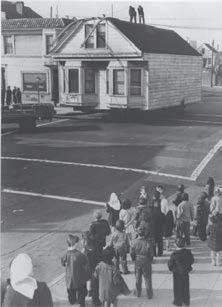

ANXIETY from page 15
Tolou-Shams is trying to “come up with gender-responsive ways to address the concerns in the community. Research suggests that we should be thinking differently for adolescent girls versus boys – not to say that adolescent boys shouldn’t have their own specific engagement approaches into mental health and substance use treatment, but there’s definitely a vision toward more relational, genderresponsive approaches to engaging young girls in mental health treatment, so we decrease the stigma and increase the level of familiarity and comfort, so that they’re more likely to turn to treatment versus engaging in unhealthy behaviors to cope with depression or anxiety, such as substance use or self-harm.”
KIDS’ BOOKS from page 16
save their mother, who was kidnapped by an eight-legged creature known as an arachnopod. “It’s an imaginative piece of work and beautifully illustrated,” he said.
Carla Kozak, the San Francisco Public Library’s Children’s and Teen Collection and Development Specialist, helps compile the library’s summer reading list with input from San Francisco Unified School District librarians, a job she called exhaustive but rewarding. The list includes more than 20 new titles for various grade levels. Kozak said the library tries to find a cross section of fiction, non-fiction, educational, graphic novels and books that span a variety of cultures. “There is such a wealth of wonderful books out there. We could easily have 100 for each level. There is so much talent out there, authors and illustrators, and the books are so spectacular,” she said.
The summer reading list includes A Goofy Guide to Penguins, by JeanLuc Coudray, for kindergarten through second grade, and The Sun is Also a Star, by Nicola Yoon, for high school-
ers. In between those age groups can be found Radiant Child, which tells the story of neo-expressionist artist Jean-Michel Basquiat, and Bronze and Sunflower, about two lonely children who bond during the Chinese Cultural Revolution
SFPL doesn’t keep records as to what books people are checking out. However, Kozak has her own sense of what’s been popular. She cites Elephant and Piggy, by Mo Williams, as a good starting point for young children. “I call him the gateway drug to literacy,” she said. She also recommended All’s Faire in Middle School, a graphic novel being released this fall that she’s reading an advance copy of. Written and illustrated by Victoria Jamieson, who authored the bestselling Roller Girl two years ago, it follows an 11-year old girl who grows up surrounded by her parents’ passion for the Renaissance Faire.
BACK TO SCHOOL from page 11
educator to work with teachers and help set up experiments. We will expand our trial hands-on program in science to most grade levels this year. We will have some coding classes, a lot of enrichment, for our students,” said Martin.
Starr King has three tracks: general education, Mandarin immersion, and one for students with autism spectrum disorder. “We will continue to focus on working with all students to create a cohesive school community,” Martin said.
According to Martin, Starr King’s PTA has been instrumental in paying for staff, and funds Education Outside, a garden-based outdoor science program. “We have had cuts to our funding. Fortunately for us, our parents have raised a lot. We used to use the money for enrichment. This year, much of the money will go to keeping personnel, like the therapist at our on-site wellness center and our social worker,” said Martin.
Martin said Starr King hopes to


welcome high school-age language tutors from San Francisco International High School (SFIHS), which moved to Potrero Hill over the summer.
Tessa Lee, Starr King’s PTA president, said planning to welcome parents and children back to school this month has been one of the organization’s focal points over the summer. “We start school on Monday, August 21, a week later than normal. The Saturday before, on August 19, the Starr King PTA hosts a Back to School Picnic Potluck from noon to 2 p.m. on campus. In addition, following morning assembly on the first day of school, we will have a parent gathering in the cafeteria,” said Lee.
Starr King’s PTA raised around $200,000 for this year. “We are a diverse community with diverse needs,” Lee continued. “Amazing volunteerism and fundraising efforts help us support our students and teachers. We work hard to fund a breadth of school needs: social-emotional support staff, outdoor education, academic support, such as a new classroom science initiative, enrichments, such as StageWrite, a nonprofit organization dedicated to building literacy through theater, and classroom supply stipends for teachers. Parent volunteers help at lunch and on field trips, assist teachers prepping materials, tutor students one on one, coach soccer and baseball. It’s inspiring.”
Elana Lagerquist, executive director of StageWrite, said her organization offers programs at Starr King and Daniel Webster. In anticipation of schools’ opening, StageWrite is hiring and training teaching artists, and creating and updating its curriculum.
“The program works the best when there is more one-on-one work with writing mentors in the classroom. The teaching artists and writing mentors write word for word what the kids say. Then the children’s stories are true to them. Writing mentors get the kids engaged, excited, and focused on their writing. We’re looking for volunteer artists, writers, and playwrights to be writing mentors for the students,” said Lagerquist.
Lagerquist said the organization wants to hire teaching artists “who come on board with classroom management skills. It starts with having a lot of experience in the classroom or having an innate ability to engage a room.”
Katie Kurtzman, a second-grade teacher in Starr King’s general education program, said her back to school preparation involves reviewing the notes she kept and journaling she taught last year. She’s engaging in online training and conversations with her colleagues, putting up “nice, fresh, colorful posters,” and “resting up a bit. Last year, my students taught me to always be on my toes, to keep my word, to slow down, and to think about what they needed as a student rather than what was easiest for me,” said Kurtzman.
Kurtzman is also working to improve relationships with students and parents. “I make myself really available by cell phone and email to accommodate families’ schedules. I am also asking families what they want me to know about their child before we get started. For students, I will continue
BACK TO SCHOOL continues on page 18







Gardener
LOOKING FOR A GARDENER? We are a small full-service landscape and garden company specializing in residential design, construction, maintenance and consulting. http://www.shapeoftheearth.com Call David @ 415.846.7581
Housekeeping
CLEANING PROFESSIONAL 30 years experience. Apartments, homes or offices and apartment buildings. Roger Miller 415-794-4411 References upon request.
Muir Beach Vacation Studio
Walking distance to the beach, with the crashing waves visible and audible from the place. Includes kitchenette and lovely patio. $175/weekdays; $200/weekends; $250/holidays. Editor@potreroview.net; 415.643.9578.
Muir Beach Vacation Home
Walking distance to the beach, with the crashing waves visible and audible from the place. Three bedrooms, two baths, with a lovely deck. Minimum two nights: $450/weekdays; $500/weekends; $550/holidays. Editor@potreroview.net; 415.643.9578.
Gorgeous, rustic, Muir Beach space and stunning Mission Dolores home available for day rentals. Perfect for six to 10 people engaged in retreats of all kinds: writing, yoga, team-building, strategy sessions. $1,500 to $3,000 a day. Editor@ potreroview.net; 415.643.9578.
Annual Subscription: $48.
Contact us at: 415.643.9578 editor @ potreroview.net advertising @ potreroview.net
Visit www.potreroview.net & follow the
for placing your ad.
$25 for up to 200 characters including spaces. Receive an additional 20% discount provided for ads paid for six months in advance!
/ office@potreroview.net
*
BACK TO SCHOOL from page 17 will take place at the Potrero Hill Recreation Center on August 12 around 12 p.m.
journaling. There is information that students don’t always want to share publicly, but will in a journal. I write back to them,” said Kurtzman.
According to Maybelle Miranda, youth programs director for Bayview and Potrero Hill schools at the Urban Services YMCA, her organization is hiring and training staff for the afterschool and morning care programs it offers at Daniel Webster and Starr King. “We will have open enrollment for our morning care program at Daniel Webster. This is the first fall the YMCA offers that. It will mostly be for families that need to drop their students off early. Students will be able to do homework, read, play games, and have breakfast. We offer the Rising Starrs afterschool program at Starr King, with a total of 140 spots. The hours are 2:40 to 6 p.m. The Starr King program is $280 a month, with sliding scale payment options based on income,” said Miranda. Daniel Webster’s morning care program is $75 monthly, with a $45 deposit due this month.
Miranda said parents should turn in their applications, as the programs fill up quickly. “We’re usually at capacity within two to three days after the first day of school. Parents are not guaranteed a spot just because their child was in the program last year. Enrollment is on a first-come, firstserved basis,” said Miranda.
Miranda said the YMCA is helping students get ready for school by collaborating with Daniel Webster and Starr King on the annual Backpack Giveaway and Resource Fair, which
Heritage Choir, Jennifer Johns, and the Meadows-Livingstone band and choir. Meadows said the school hopes to raise $50,000 through the event.
Meadows-Livingstone is a first through sixth grade school located at 1499 Potrero Avenue. It draws students from the City and East Bay. “We are an Afrocentric school that helps children discover and celebrate their identity,” said Meadows. “ The media we are looking at include the film, The House of Dies Drear and the books Her Stories: African American Folktales, Fairy Tales, and True Tales, The Planet of Junior Brown, and Hip Hop Speaks to Children: A Celebration of Poetry with a Beat.” An educational workshop this fall will focus on parenting children of color; a camping trip to Bothe-Napa Valley State Park in Calistoga will be held in the spring.
Annie Schuessler, parent of sevenyear-old Axel Palms, a Meadows-Livingstone School student, said she tries to maintain an educational atmosphere throughout the summer. “This way he stays in his routine. He’s got to keep reading and have us read to him every day. We avoid increasing his TV and video game time in the summer,” said Schuessler.
a working bell system, and painting the Huskies name on the side of the building.”
SFIHS was previously situated at 1050 York Street at the old Bryant Elementary School campus. It moved to the Enola Maxwell campus at 655 De Haro Street, which was largely empty for at least a year, last June. Over the summer, SFUSD is repairing the campus’s floors, electrical system, and plumbing.
SFIHS’ has 400 students, all of whom are refugees or recent arrivals to the U.S. The move to the Enola Maxwell campus marks the first time the students will have access to such things as a cafeteria, gym, auditorium, library, and science laboratories. “Our parents work two to three jobs,” said Kessler. “A PTA doing fundraising is not a reality for us. The district has provided a lot of support. We and the parent community are very excited about the opportunities this campus provides.”
Gail Meadows, Meadows-Livingstone School principal, said her school, which has a board of directors instead of a PTA, has been fundraising throughout the summer. The board is holding its Second Annual Meadows Livingstone Scholarship Fund Concert on August 6 at Freight & Salvage Coffeehouse. Performers will include Linda Tillery and the Cultural
Brandi Mack, an instructor at Meadows-Livingstone School, and parent of nine-year-old Isis Mack, who attends the school, is familiarizing herself with current efforts in STEM education. “I am a permaculturist and horticulturist and I do restorative justice. I will be teaching a writer’s workshop, math, and gardening at Meadows-Livingstone this year. This summer I’m “cross-pollinating” with other individuals in the community, learning more about science education. I am also engaging in self-care, going to medical check-ups, and incorporating more family events into my schedule. That way I can be fully present for the students when I see them this fall,” said Mack.
“So much of our back to school prep involves moving our building,” Julie Kessler, SFIHS principal, said. “We’re unpacking boxes, getting the building rekeyed, making sure we have
Kyle Halle-Erby, a SFIHS teacher, said he’s dedicated his summer to college prep planning for recent graduates and rising seniors. “I teach 12th graders in college and career classes. I’m also one of the coordinators for the Span college retention program. This summer, I’m getting all of our alumni headed off to City College of San Francisco together for a reunion at the new Enola Maxwell campus. It’ll help make sure everyone’s ready,” said Halle-Erby.
In addition, Halle-Erby is planning family meetings with parents and rising seniors along with other SFIHS teachers and counselors to discuss the college application process. “It’s so new for everyone. We tell the students, “You’re the one who’s going to decide what is going to happen,”” said Halle-Erby.
Halle-Erby said another task is to collaborate with other SFIHS faculty to bring back recent graduates to talk to and tutor high school students. “There’s a sense of hope that my students and their families bring here. We like to encourage and build on that for our current student body,” said Halle-Erby.

William Sachs Goldman
February 10, 1979 to July 13, 2017
William (Bill) Sachs Goldman, 38, died last month when his private airplane crashed in Sonoma County.
The son of Susan Sachs Goldman and the late Richard Walter Goldman, Bill was born and raised in Washington D.C., where he attended the Sidwell Friends School. He earned a Bachelor of Arts in History from Yale University, where he was a member of the Yale Glee Club and a photographer for the Yale Daily News. He received his master’s degree and doctorate in history at the University of California, Berkeley.
Since 2012, he was an assistant professor of international studies at the University of San Francisco, where he specialized in early modern Spanish history. Bill loved sharing his knowledge not only with his students but also with family and friends; on trips, at dinner parties, wherever he could find an audience. He’d previously taught at Stanford University, and was a former research fellow at the University of California, Los Angeles.
He was active in a variety of philanthropic endeavors. In 2012, he and
his siblings founded the Richard W. Goldman Family Foundation to help underserved children and communities gain access to education, health, and financial resources. He was treasurer of the international board of directors of the New Israel Fund, a nonprofit organization dedicated to fostering civil rights and democracy in Israel. He served as president of the board of directors for the Walter and Elise Haas Fund, a family foundation that supports economic security, education, Jewish life, and the arts in the Bay Area.
He was a volunteer pilot with Angel Flight West, flying 13 missions since 2013 to transport critically ill adults and children to receive medical treatment. He was passionate about flying, political discourse, gourmet food, a good Manhattan, long bike rides, the Washington Redskins, and the San Francisco Giants, but his greatest love was his family.
He’s survived by his wife, Serra Falk Goldman, and their two children, George Richard Goldman and Marie
Aliena Goldman, as well as his mother, Susan Sachs Goldman; brother, Daniel Sachs Goldman, sister-in-law, Corinne Goldman; sister, Alice Goldman Reiter, and brother-in-law, Benjamin Reiter; brother-in-law, Harry Falk IV and wife, Rochelle Falk; and brother-inlaw, Taylor Falk and wife, Rachel Falk. Bill was a beloved uncle to 10 nieces and nephews.
The family encourages memorial donations be made to his children’s school, La Scuola International School, or the New Israel Fund.
Kathleen Carroll Nibbi October 3,1945 to July 13, 2017
Kathleen “Kathy” Carroll Nibbi passed away July 13, 2017, ending a five-year battle with Leiomyosarcoma.
Kathy was born on October 3, 1945 in San Francisco. The oldest of six children, she took pride in looking after her five younger brothers, while0 her father worked as a butcher, her mother as a nurse. She graduated from Mercy High School, and attended San Francisco College for Women (Lone Mountain).
In 1962, Kathy met her husband, Larry, at a Riordan High School dance. The two high school sweethearts married in 1967. Many family gatherings were celebrated at Kathy and Larry’s home. Kathy loved to cook, bake, make pasta from scratch, try new recipes from her travels, sew, garden, and take care of her home. At Christmas, she’d
bake homemade cookies for weeks. Her greatest passions were being a wife, mother and grandmother, nurturing a fifty-year marriage, three daughters, and three grandsons, who affectionately called her “Lala.”
Kathy took several cruises to global destinations, and vacationed at annual Spring Training trips to Scottsdale, and at the family home in South Lake Tahoe.
In addition to her family life, Kathy was committed to giving back to her community. For more than 40 years, she was an active member of the San Francisco Auxiliary to the Children’s Hospital at Stanford, which later became Lucile Packard Children’s Hospital Stanford. As a dedicated volunteer-leader, she chaired the Auxiliary’s Jewel Ball – one of San Francisco’s longest-running charity benefit events, started 65 years ago, to provide funding for medical care for children in need – three times, and served as the organization’s president for three years. She also was president of Packard Hospital’s Association of Auxiliaries, and served on the Board of Directors of Lucile Packard Children’s Hospital Stanford soon after it opened in 1991.
Kathy is survived by her husband, Larry Nibbi; three daughters, Gina Nibbi, Michele Nibbi, Amy (Dan) Leder; grandsons Daniel, Jay and Timothy Leder; brothers John Carroll, Michael (Sonia) Carroll; brother-inlaw Sergio (Karen) Nibbi, and many nieces and nephews. Kathy is preceded in death by her parents, Kevin and Carolyn Carroll, and her brothers, Kevin, Brian, and Dennis Carroll.






